When you are shopping for ammo, you need to make sure that you are able to find the right type for your need. There are different sizes and brands to choose from and you want to ensure that you always use the type of ammo your gun was designed for. 9mm is a good caliber to own because it is so common and there are an endless supply of amazing 9mm pistols available to fit your particular style.
When someone says that they are going to use 9mm ammo or shooting their nine, it is common that they are going to use a 9X19 cartridge. This is one of the most popular rounds to use in handguns in the United States. This will allow you a lot of different choices when it comes to hunting, self-defense, and more.
Because there are a lot of different types of 9mm that you can choose depending on the type of shooting that you need to do, the power, and some of the different options for recoil as well. We’ll give you a rundown of several popular alternatives you may not have heard of: the 9×18 Makarov and the .380 ACP for instance. Both of these cartridges are fairly similar, being around the same size and featuring similar ballistic power profiles. But there are some differences you should be aware of before purchasing one or the other. Let’s take a closer look at some of the different types of 9mm ammo that you can choose along the way.
What Caliber is 9mm?
9mm bullets are .380 caliber. Caliber refers to the diameter of the cartridge / internal diameter of the gun barrel bore. However, the same caliber bullets can come in different lengths as we discuss below.
There are a lot of benefits to using this bullet type including how easy it is to find, the low cost, and the strong power that you need. Since the caliber on this is close to half of what the .45 caliber bullet will do, you will get to enjoy a lot of power with less recoil. With a good deal of power, lower cost, and less recoil, you will find that the 9mm bullet is able to get the work done for you quickly.
What Does 9mm Mean?
Many people may be confused about what 9mm means. This is going to help describe some of the different features that come with the bullet, mostly the size of the axle. If the size of the axle is the same for a bullet that you use, then they will fit into the category of a 9mm. The bullet is going to be 9 millimeters in diameter, but there can be different lengths and more along the way too.
9mm Ammo Specs
| Bullet | Case Length | Bullet Diameter | Max Pressure | Case Type |
| .380 ACP | 17.30mm (.680″) | 9.02mm (.355″) | 148 MPa (21,500 psi) | Rimless straight |
| 9mm Makarov | 18.03mm (.710″) | 9.25mm (.364″) | 162 MPa (23,500 psi) | Rimless tapered |
| 9mm Luger | 19.15mm (.754″) | 9.02mm (.355″) | 241 MPa (35,000 psi) | Rimless tapered |
| 9mm Browning Long | 20.20mm (.795″) | 9.09mm (.358″) | Semi-rimmed straight | |
| .357 SIG | 21.97mm (.865″) | 9.02mm (.355″) | 276 MPa (40,000 psi) | Rimless bottleneck |
| .38 Super | 22.75mm (.895″) | 9.04mm (.356″) | 251 MPa (36,500 psi) | Semi-rimmed, straight/Rimless, straight |
| .38 ACP / Auto | 22.86mm (.900″) | 9.04mm (.356″) | Semi-rimmed straight | |
| 9mm Largo | 23.11mm (.910″) | 9.02mm (.355″) | Rimless tapered |
9mm Luger (9x19mm)
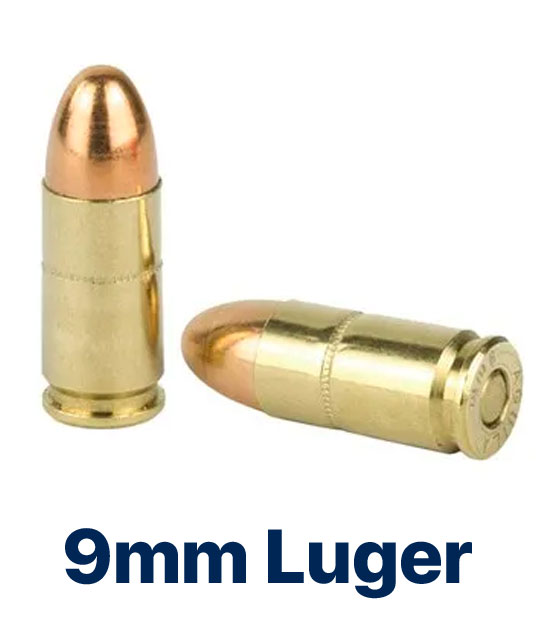
The 9mm Luger, also known as the 9X19mm, is a rimless and tapered firearms cartridge that is very popular. It was originally designed through an Austrian firearm designer by the name of Georg Luger during 1901. This is often seen as one of the most popular types of handgun cartridges because it is easy to utilize, has a lot of power, and can work in a lot of different types of guns along the way.
Since this was a cartridge that was designed to work through the Luger semi-automatic pistol, it has been given the designation of a 9mm Luger, though it does work with other types of handguns as well. You will find that most of the firearms that are used by police forces will rely on this type of bullet as well.
The following names are synonyms and all refer to the exact same 9mm Luger:
- 9 mm Luger
- 9 mm NATO
- 9 mm Parabellum
- 9×19 mm
- 9×19 mm NATO
9mm vs 9mm Luger
“9mm” usually means 9mm Luger, though some ammo shops may differentiate between the 9mm Luger and other types mentioned below. You should look on the box to make sure that it is the right kind of 9mm ammo that you want. You can check to make sure that it is not going to be one of the other types mentioned below.
9mm Parabellum vs 9mm Luger
The 9mm Parabellum and the 9mm Luger is the same bullet, but with a different name. If you go into an ammo shop and purchase a 9mm luger gun and Parabellum ammo, then you can rest assured that you are getting what you want, no matter what the name is. You will be able to work with either of these and see the same results.
9mm NATO (9×19 NATO)
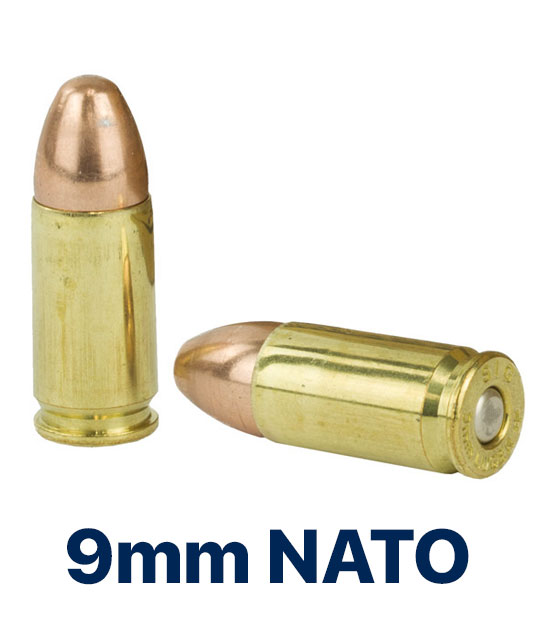
9mm NATO is a newer type of ammo compared to some of the other options that you can choose. It is often found in the Sig Sauer and Winchester ammo division compared to some Luger ammo and it may not be as easy to find as some of the other bullets. It can bring a good deal of power to the game and will work better in some of the different types of handguns that you choose compared to the Luger.
9mm NATO vs. 9mm Luger
There are only a few slight differences between the 9mm NATO and the 9mm Luger. To start, the 9mm NATO is going to have higher pressure than the luger. These rounds are also going to be a bit spicier compared to the Luger. The accuracy and the reliability is pretty much the same, but the NATO is going to have a bit more snap because of how far it can go. The NATO will go for 1250+ fps while the Luger is going to stay close to 1100 feet per second.
.380 ACP (9×17mm)
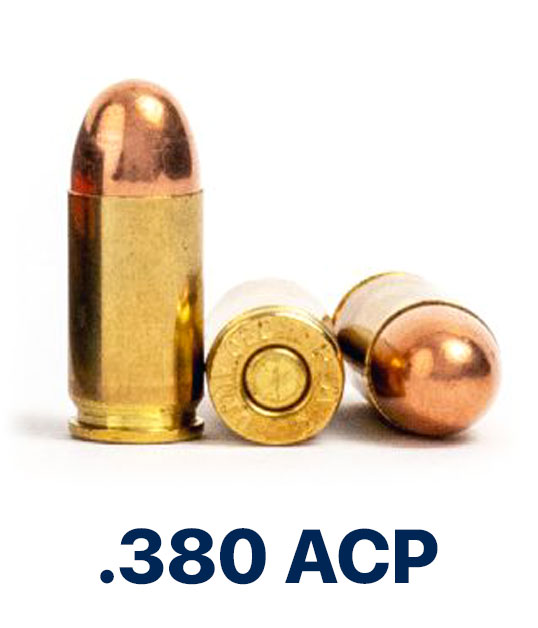
The .380 ACP or Automatic Colt Pistol cartridge is a rimless straight-walled pistol cartridge developed in 1908. It was originally intended to be used in the Cold Model 1908, though it has since become one of the most popular American self-defense cartridges of all time. It can even be used in modern handguns (especially smaller pistols).
The .380 ACP cartridge also typically fires a 95-grain bullet, though it has a lower average muzzle velocity compared to the 9×18 Makarov: 980 ft./s. However, some American manufacturers like Buffalo Bore produce specialized versions of the .380 ACP cartridge with higher than average muzzle velocities, like 1125 ft./s.
As a similarly low-powered handgun cartridge, the .380 ACP cartridge has a maximum effective range of between 50 and 100 yards depending on the exact firearm and the skill of the shooter.
The following names are synonyms and all refer to the exact same .380 ACP:
- .380 Auto
- 9×17mm
- 9mm short
- 9mm Browning
- 9mm Browning Court
Where Can You Buy .380 Amo?
.380 ACP ammunition will be a lot easier to find in America due to its American origin. Indeed, you can find .380 ACP ammunition in almost every retail gun shop in the country, provided they have classic gun models like Glocks and Remingtons available to take it.
Additionally, the .380 ACP cartridge can be found at a variety of online marketplaces and stores for cheap. Both cartridges can be purchased at a discount if you buy the ammunition in bulk, which is true of most gun ammo overall.
380 vs 9mm – Are they interchangeable?
No, 380 ACP and 9mm bullets are not interchangeable and you should not try to chamber one in a gun it wasn’t designed for. While they share similar diameters, they have different lengths which could make it dangerous.
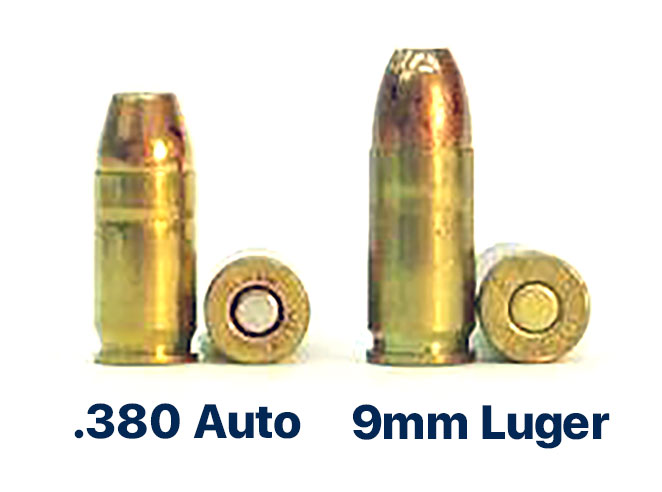
Both of these are popular choices to go with depending on what you would like to use it for. Many will choose these as self-defense rounds. They will come with the same diameter, though the 9mm is going to be a little longer. the .380 ACP will be cheaper and easier to handle and conceal, but the 9mm is going to have more power of the two. Both of these will provide a good option, but it depends on the strength and the cost that you want.
9mm Makarov (9x18mm)

The 9×18 Makarov, also called the 9mm Makarov or 9x18mm PM, is one of the most popular Soviet submachine gun and pistol cartridges. It was originally developed toward the end of World War II in 1946. The 9×18 Makarov was intended to be a powerful cartridge that wouldn’t produce too much recoil when used in a typical blowback pistol of the time.
Interestingly, the 9×18 Makarov was also designed with a slightly large than average caliber, .365”, so that the Germans, were they ever to invade Russia again, could not use the rounds in their 9 mm weapons.
Yet it wasn’t until 1951 that the 9×18 Makarov, and its similarly named pistol, were accepted and widely used in the Soviet army. With a standard load of 95 grains and a typical muzzle velocity of 1050 ft./s, the 9×18 Makarov has a typical effective range of about 50 m or 55 yards.
Where Can You Buy 9×18 Makarov?
As mentioned, the 9×18 Makarov was designed in Russia, so most manufacturers of the cartridge are from the Eastern Bloc and similar locations. That being said, you can easily find 9×18 Makarov ammunition from online gun ammunition stores and/or marketplaces. Some US retail stores may also carry 9×18 Makarov ammunition if they sell pistols or submachine guns chambered for the cartridge.
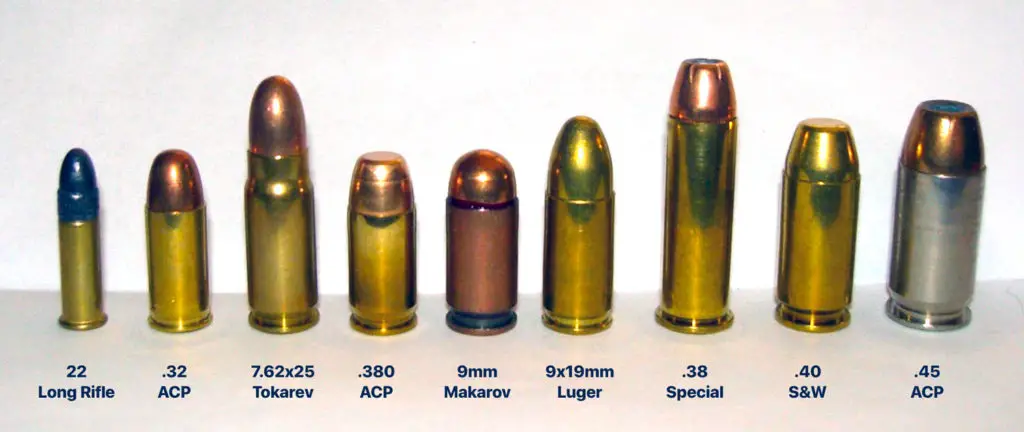
9×18 Makarov vs 380 ACP – Are they interchangeable?
No, the 9×18 and 380 are not interchangeable. Although the 9×18 Makarov and .380 ACP cartridges seem to be almost identical, they do have a number of significant differences that make them incompatible with each other’s firearms. This isn’t to say that you won’t be able to possibly get one to fire one in your gun, but we don’t recommend it for safety reasons.
The .380 ACP cartridge’s caliber is .355” while the 9×18 Makarov’s caliber is .365”. Thus, they are slightly different sizes overall. Remember, this was intentional on the Makarov designer’s part. Additionally, the Makarov case is normally tapered, whereas the .380 ACP cartridge’s case has straight walls. The other dimensions of both cartridges are also dissimilar enough that you can’t use the cartridges in the exact same pistols.
What is Each Cartridge Ideal For?
Both the 9×18 Makarov and the .380 ACP are largely intended as short-range, self-defense pistol cartridges. To that end, you can slot them in firearms like pistols and submachine guns of similar sizes.
The 9×18 Makarov, for example, is commonly used in pistols like the Makarov PM, the P-64 Pistol, and the Grand Power P9M. The .380 ACP cartridge, on the other hand, is used in pistols like the Glock 42, the Remington Model 51, and the Kel-Tec P3AT.
Both cartridges have enough stopping power to serve as suitable self-defense projectiles. When shooting center mass, one or two cartridges should be enough to take down an attacker. Both cartridges are also fairly accurate within their effective ranges. You may be able to use the 9×18 Makarov and .380 ACP cartridge for small varmint hunting on your property.
That said, the 9×18 Makarov cartridge is about 10% more powerful compared to the .380 ACP when measuring ballistic power directly. The 9×18 Makarov cartridge is also typically cheaper and easier to find online, though you may have more difficulty finding it in-store in America due to its Eastern Bloc origin.
9mm Makarov vs. 9mm Luger
You will notice that the 9mm Makarov and the 9mm Luger have a lot of the same power and features as one another, though there are a few differences that you are able to see. The 9mm Luger is going to come with more power and the recoil will be more manageable for most people. It also helps to deliver a flatter trajectory and is popular enough that you will be able to find it local to you in most cases.
The barrel of the 9mm Makarov is going to be fixed, which helps with the accuracy. However, it does give a heavier recoil and has less availability, making it harder to find, so it is not a choice that a lot of people will want to use it. Even though the two have similar names to one another, there are different ways to use them and you will need to see which one is best for you.
If you are looking to go with a gun that has a fixed barrel, then you will want to go with the Makarov bullet to help. This is one of the best for the accuracy that you want. However, the 9mm Luger is going to be a great option to choose for more precision, power, and more too. You may need to choose based on what is the easiest to access in your area too.
9mm IMI (9x21mm)
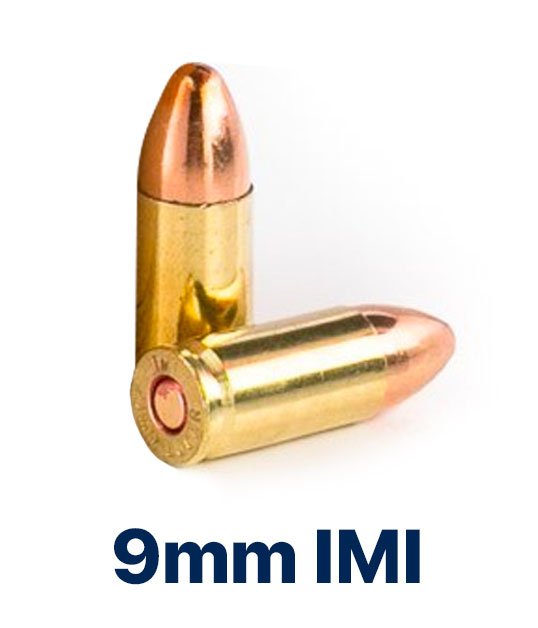
The 9mm IMI, or 9X21mm pistol cartridge was originally designed in Italy by Jager before being adopted by the company of Israel Military Industries. This turned it into a cartridge that was used for military services and are not allowed to be used by civilians at this time.
During the 1980s, this is the cartridge that became the right caliber to be placed into military cartridges for pistols that were used by the military. They are frequently forbidden for civilians to use at the time. There are some exceptions to this, but caution has to be used to make sure that this powerful cartridge is not going to hurt anyone.
9X21 vs. 9X19
The main difference between these two bullets is the size. The 9X21 is going to be 2mm bigger than the other, which makes it a bit stronger on the field as well. Customers are more likely to get their hands on the 9X19 cartridge due to their common usage and popularity in America.

.357 Sig (9x22mm)

The 357 SIG was designed in 1994 by the Sig Sauer firearms manufacturer. The name and idea behind the design of the cartridge was to match the performance of a .357 magnum, but with the higher capacity of a semi-automatic pistol.
While the bullet hasn’t had much widespread public adoption, it has found a home at many police and law enforcement agencies including the Federal Air Marshals, Delaware Police, Montana Highway Patrol, Texas Rangers, Virginia Police, and more.
357 SIG vs 9mm
The main physical difference between the 357 sig and the 9mm luger cartridge is the size and shape. While both have the same diameter, the 357 Sig is over 2mm longer and has a slightly higher max pressure. The 357 also has a bottlenose case as opposed to the tapered luger. The 357 Sig is not nearly as common for civilian use as the 9mm luger and is therefore about twice as expensive and harder to find in stores. Both bullets should only be fired in guns chambered for their specific round.
.38 ACP (9x23mmSR)
The .38 ACP (Automatic Colt Pistol), also called the .38 auto, was designed and produced in 1900 by John Browning for his Colt M1900. The designation of 9x23mm includes an “SR” added to it which stands for “Semi-Rimmed.”
Surprisingly, the .38 auto was found to usually cycle fine in Spanish Astra 400 pistols that were designated as 9mm Largo, which resulted in a spike in sales in the mid 1900s. However, Europe and most of the world eventually came to favor the 9mm luger, resulting in a decline in sales.
The .38 ACP is not the same and shouldn’t be interchanged with the .38 S&W or the .38 special.
.38 ACP vs .38 Super
The .38 ACP bullet initially was loaded with very powerful loads which proved too much for the Colt M1900 pistol. It was decided to reduce the load power in the .38. Later, the .38 Super was released which contained the higher power loads of the original .38 ACP.
The .38 Super can propel a bullet about 22% faster than the .38 auto (1,280 ft/s vs. 1050 ft/s for a 130 grain bullet). This results in more stopping power and longer firing distances.
.38 Super (9x23mmSR)
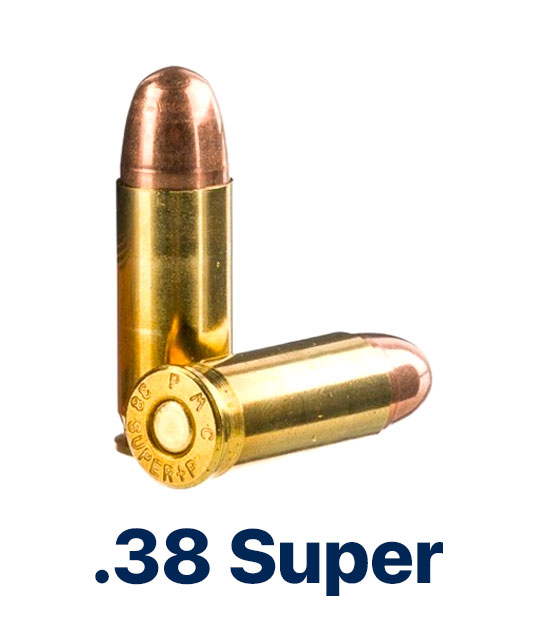
The .38 super was designed to be a higher pressure .38 Auto cartridge. Colt started producing them in 1929 and still manufactures them today.
While not near as common as the .38 auto in America, the .38 super has gained in popularity in other countries such as latin America and Australia, which tend to have laws restricting ownership of ammo over .38 caliber.
38 Super vs 9mm
The matchup of .38 super vs 9mm rounds has been long debated, and with good reason. They are two of the more solid and reliable cartridges and are very similar in terms of size and capabilities. They do have some significant differences that widen the gap between the two, however, and these differences may encompass some of the deciding factors in deliberations of which platform to ultimately use. Here are the key differences between .38 super rounds and 9mm rounds.
Ballistic Differences
The .38 super has a longer case, but a diameter that only differs by a thousandth of an inch, which means it can be loaded with more powerful loads than any 9mm Luger round. The greater base capacity for powder directly correlates to more power upon ignition, resulting in higher muzzle speeds. The faster .38 super round carries much more kinetic energy than the slower 9mm, giving it an edge in ballistics.
Pricing Variances
Since the 9mm has been in seen military use for more than a century and is more popular, overall than the .38 super, there is a much more robust supply of 9mm ammo out there. This makes 9mm much more affordable and cost-effective to shoot than .38 super.
Overall Trajectory
Since the .38 super has a more powerful load sending it downrange, it fires faster and flies flatter. While of course, this means it packs a significant punch, it means it will also have a straighter trajectory, and significantly more stopping power than the 9mm. Since the 9mm is traveling much slower, much more power is lost before eventually reaching the target, making it less effective overall.
General Accuracy
In short-range applications, both the .38 super and the 9mm are incredibly accurate. However, the .38 super does maintain an edge over the 9mm since it can use much heavier projectiles while maintaining higher kinetic energy and muzzle velocity. While the difference is negligible, the .38 super can be considered to have better general accuracy than a 9mm.
Long-Range Applications
In any situation where the shooter is going to be sending the round more than 50 yards, there is going to be a noticeable difference in performance between a 9mm and a .38 super. The increased velocity and power of the .38 super, as well as the resulting flatter bullet trajectory, means that the clear winner in any long-range application is going to be the .38 super.
Felt Recoil
While the 9mm h a lower felt recoil than a standard .38 super round, that difference ends up being relatively minimal. When the calibers are firing much hotter rounds, however, the .38 super recoil becomes more manageable while the 9mm becomes rather harsh.
Differences For Reloaders
If you shoot competitively and load your own cartridges, a .38 super round will be much easier to work with while staying within shooting specifications. The power availability means that you must load a 9mm to create a super high-pressure cartridge, while the .38 super can give the same performance with a much safer powder load.
9mm Largo (9x23mm)
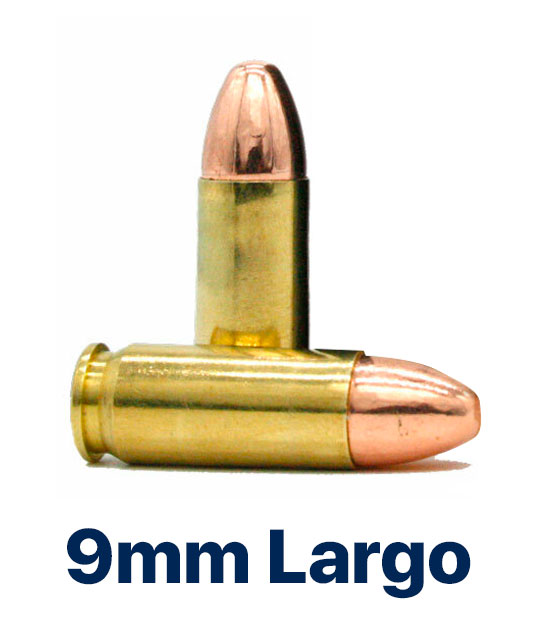
The 9mm Largo is making a comeback in some circles. This is similar in its dimensions to the 9mm Steyr, which makes it a good option for a lot of people. The cartridge for the 9mm Largo is going to be 4mm longer than what customers will find with the 9mm Luger. This makes it bigger and allows for up to 30% more case capacity. This allows it to have a superior performance at the same pressure or to give the same performance with lower pressures.
Most of the versions of this gun will have lower pressures and lower performance levels due to the way that they are manufactured, which helps make them more similar to the 9mm Luger. However, this does provide a lot more power when compared to other pistols like Browning and more.
While this is a brand that seems to do well in Spain and Europe, it is slowly starting to find its way to America due to the low prices. The great performance and the low cost with lots of power make this a great gun to own.
Wrap Up
As you can see, a lot of the 9mm cartridges are pretty similar, though they retain a few major differences that prevent them from being used in the same firearms flat out. Still, you can choose a firearm for any of the cartridges and expect them to perform in pretty much the same way and do the same things.
Both the 9mm luger and the .380 ACP are ideal self-defense cartridges to use for property defense or for use in concealed carry pistols. Due to their ubiquity and affordability, you can easily stock up on these cartridges and ensure you have plenty of ammunition for the foreseeable future.
All of these cartridges can also be used for short-range hunting or varmint clearing, or for target shooting in your backyard or at your local gun range. Bottom line: just make sure that your pistol is chambered for the right cartridge since loading your weapon with the wrong ammo could lead to a malfunction or even worse.
Related Topic: Are there 9mm lever action rifles?
FAQ
With no obstructions in the way, the 9mm bullet is able to go 2300 meters. This is close to 20 football fields in distance. This makes it a good option to choose when it comes to shooting or hunting even far away game.
9mm bullets typically weigh between 7.0 to 8.3 grams. There is some variance on the weight for your 9mm bullet, but it is very little. The plating used on it will determine the exact weight.
9mm bullets typically have a diameter between 9.02mm (0.355″) to 9.09mm(0.358″). The difference in size will be due to the exact plaiting that is used on the bullet.
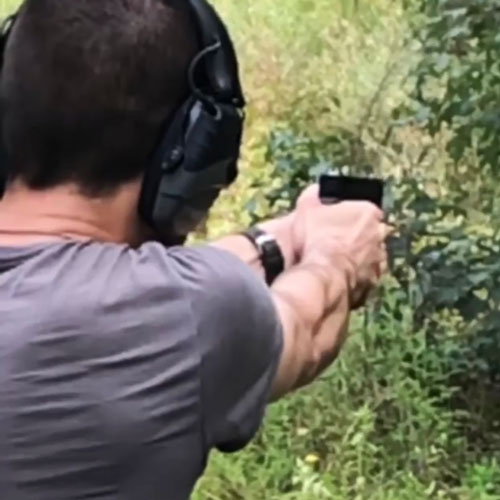
Growing up, John loved learning about the components of firearms and what makes them work, which still intrigues him to this day. He’s a very outdoorsy person, and he loves fishing, hunting, and skeet shooting. He is a firm believer in the Second Amendment and the right to bear arms.
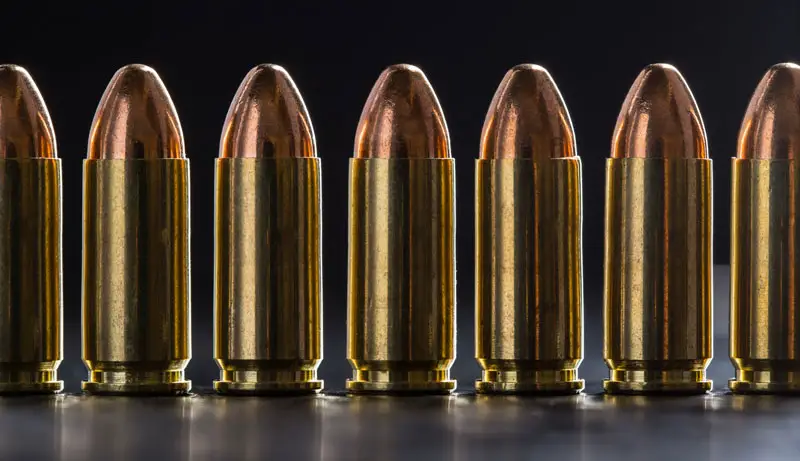

Read and love your article. Best explanation for a beginner that I’ve ever read. Have used it in classes for police officers.l
Thanks Timothy! We’re happy to help.
Excellent intro into 380 – 9mm
Thank You and Keep up the great work!
I laid ten 9mm luger rounds on a table side by side, making sure that the cartridge bodies touched, they made a small smiley face. This means that the cartridges are tapered. I did the same with ten 9mm NATO, or straight walled cartridges…and they remained flat and even across the bottom. Not sure what the brands were, I simply read an article and tried it. I kept wondering why the 9mm lugers would mis-feed into my glock, while I never had a problem with the NATO auto rounds. I determined that the tapering of the cases was the problem. What do you think? Do you know which brand makes 9mm NATO or otherwise (straight walled) rounds? Thanks.
Informative !!!
Thank you for discussing the different types of ammo to use for different types of shooting. I want to go hunting this summer for the first time. I will find a good 9mm brass ammo shop nearby.
The 9×18 ultra was left out. German made in 1936 As I remember. Is a 9×18 round but is .355 normally called an ultra. Of course a 9×18 Russia round will not chamber in the ultra as diameter is larger.Was step up for German police because of restrictions after the war.Just a tidbit.